
The painting "The Adoration of the Trinity" by Albrecht Dürer - The City of God through the eyes of the artist
"The Adoration of the Trinity" is a painting created by Albrecht Dürer in 1511. The work, also known as "All Saints' Day" or "The Landauer Altar," was commissioned by the wealthy merchant Matthäus Landauer for the altar in the so-called House of the Twelve Brothers in Nuremberg. Having amassed wealth from the ore trade, Landauer established this charitable institution in 1501 to support elderly craftsmen who could no longer sustain themselves through their work. The chapel was dedicated to all saints, which determined the choice of subject.
The scene takes place in heaven after the Last Judgment. The focal point of the artwork is the Holy Trinity. In the center, Christ is depicted crucified, while above Him, God the Father is enthroned, supported by angels holding His golden robe with a green lining. Above them hovers a white dove surrounded by light, representing the embodiment of the Holy Spirit. Beyond the central composition, to the right of the cross, John the Baptist leads kneeling kings and prophets of the Old Testament, including Moses with the tablets of the commandments and King David with a harp. On the left, we see the Virgin Mary followed by New Testament saints holding palm branches.
The artwork is replete with biblical references, and precise details make the great martyrs recognizable: Saint Catherine holds a sword and a wheel with spikes, while Agnes rests beside a lamb on her knees. Below them are the righteous individuals worthy of entering the City of God, representing spiritual figures and commoners from all walks of life, from the Pope to a simple monk, from an emperor to peasants. The master of the altar, Landauer, and his son-in-law Wilhelm Haller are immortalized, taking their places next to the king and cardinal. The strictly measured, almost symmetrical composition, and the division of figures into distinct groups all indicate the clarity and orderliness of the divine world, emphasizing the solemnity of the scene.
Only the self-portrait of the artist in the lower right corner disrupts this order, as the master stands on a narrow strip of depopulated land as the sole witness to the miraculous vision. His hand rests on a tablet with an inscription that certifies his authorship and the year of the painting's creation. The message is complemented by Dürer's monogram, where the letter "A" surrounds the letter "D."
The vibrant colors of red, gold, blue, and green make the palette rich and joyful. The dark blue garment of Mary, the Pope's tiara, and the fluttering cloak behind the crucifix all echo the hue of the sky. The colors have retained their brightness and captivating freshness to this day.
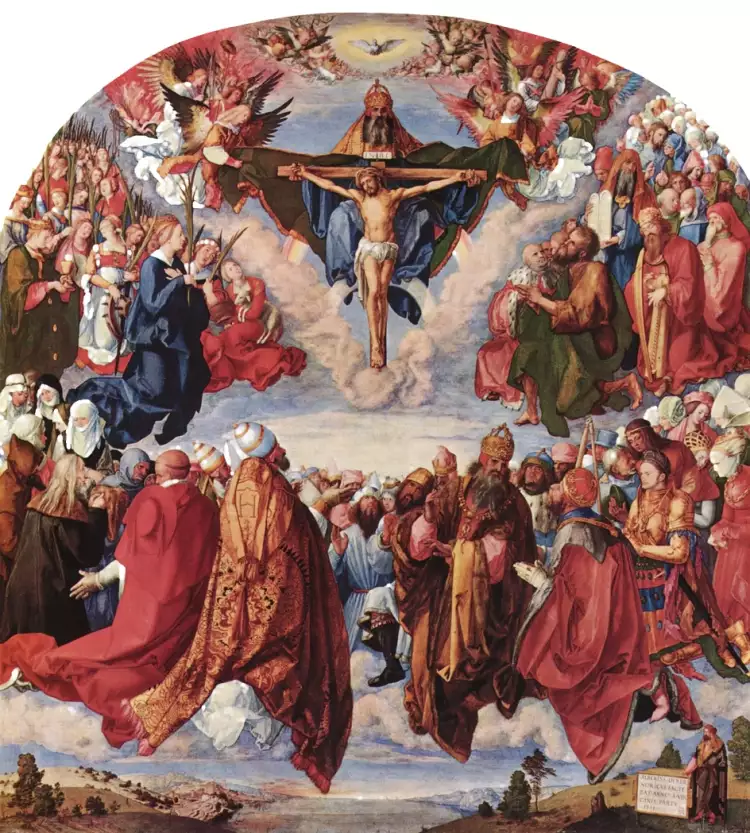 Albrecht Dürer. The painting The Adoration of the Trinity, 1511
Albrecht Dürer. The painting The Adoration of the Trinity, 1511
- Title the painting: "The Adoration of Trinity" or "The Landauer Altar" (German: Allerheiligenbild or Der Landauer Altar).
- Artist: Albrecht Dürer (1471-1528).
- Year of creation: 1511.
- Dimensions: 135 x 123 cm.
- Style: Northern Renaissance.
- Genre: Religious.
- Technique: Oil.
- Material: Poplar wood panel.
- Location: Museum of Art History, Vienna, Austria.
Albrecht Dürer is the greatest representative of the German Renaissance, a master painter, engraver, art theorist, whose work had a tremendous influence on artists in Germany and other Western European countries. The leitmotif of his works is the struggle between light and darkness, reason and dark passions.
Shortly before receiving this prestigious commission, the artist returned to Nuremberg from his second trip to Venice, which was a revelation for him. He chose a more modern form of the altarpiece rather than a winged altar in the late Gothic style. Dürer had previously drawn inspiration from the art of the Italian Renaissance during his stay in Venice from 1505 to 1507 when he created the altarpiece "The Feast of the Rosary" or "The Feast of the Garlands of Roses" (Rosenkranzfest), following the Italian tradition.
Dürer also designed the frame for the Landauer Altar, which was presumably carved by Ludwig Krug, a German engraver, sculptor, and jeweler. The first sketch of the carved portal and panels dates back to 1508 and shows that they formed a carefully designed ensemble. The frame corresponds to the Italian model of an edicule frame (edicule - a small shrine) from the Renaissance period. The crowning arch field and architrave are covered with relief depictions of the Last Judgment. On the tympanum, Christ is depicted as the judge of the world, with Mary and John as intercessors for humanity. Little putti trumpet on their trumpets on both sides. On the frieze to the left, a procession of the saved is depicted, led by angels towards the sun, while on the right, the devil drives damned souls into hell. In the middle, the struggle for the soul of the resurrected man lying on the ground is shown.
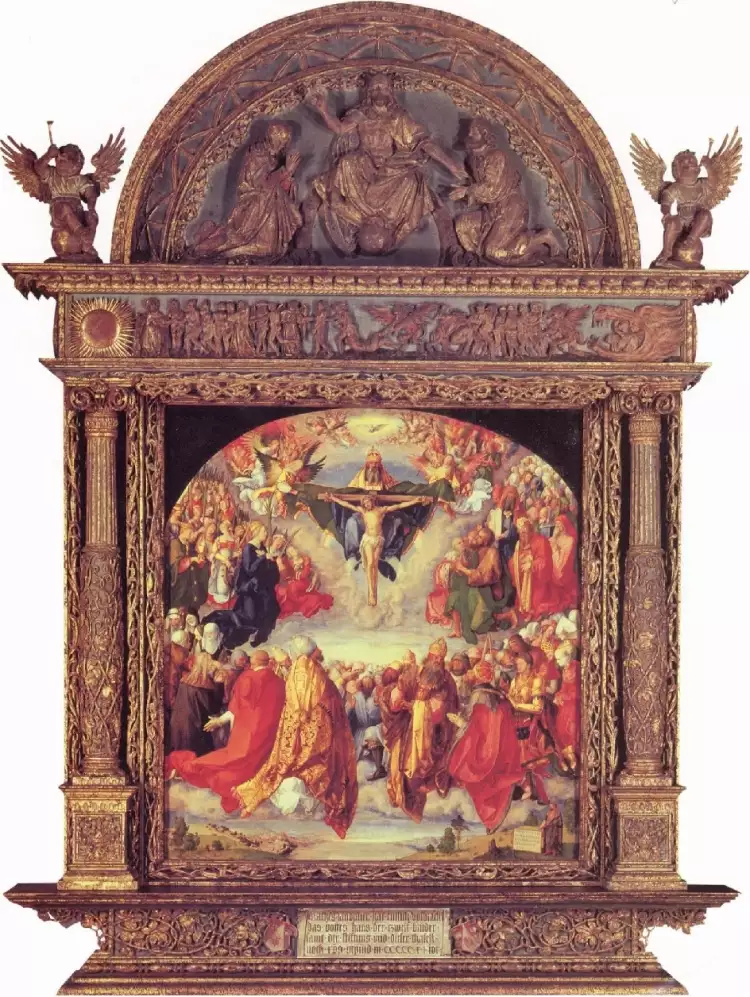 Albrecht Dürer. The painting The Adoration of the Trinity, altar frame, 1511
Albrecht Dürer. The painting The Adoration of the Trinity, altar frame, 1511
The painting "The Adoration of the Trinity" gives cause for reflection on the culture of humanism even for non-religious individuals. The artist succeeded in conveying the grandeur of the human spirit, which inevitably triumphs over the base side of human nature.
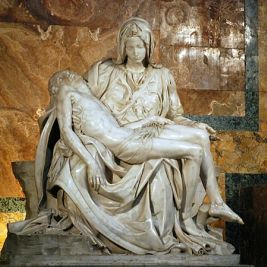 Sculpture "The Pietà" by Michelangelo Buonarroti is a iconic work in Catholicism
Sculpture "The Pietà" by Michelangelo Buonarroti is a iconic work in Catholicism 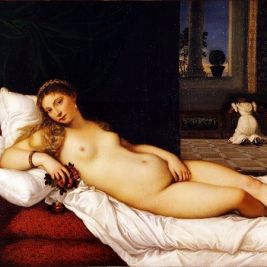 Genre of Nude in Painting: Evolution and Historical Trends of the Nude Style
Genre of Nude in Painting: Evolution and Historical Trends of the Nude Style  Embracing Anti-Design - The Bold New Wave in 2024
Embracing Anti-Design - The Bold New Wave in 2024  Five centuries of antique and modern firearms
Five centuries of antique and modern firearms 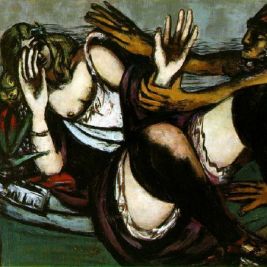 Expressionism - a shocking emotional movement in 20th-century art
Expressionism - a shocking emotional movement in 20th-century art 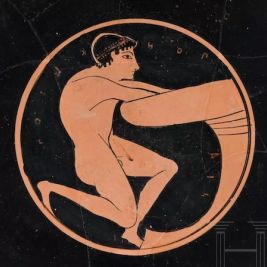 Hermann Historica Auction: Kunst, Antiquitäten & Antiken
Hermann Historica Auction: Kunst, Antiquitäten & Antiken 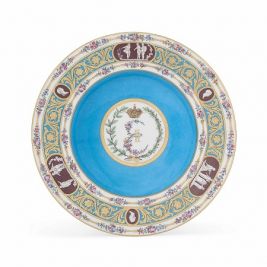 Sèvres porcelain
Sèvres porcelain 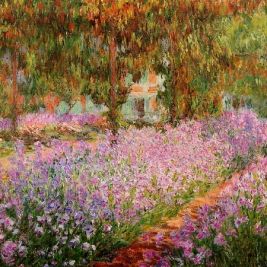 Impressionism in painting, or The Catchers of the Beautiful Moment
Impressionism in painting, or The Catchers of the Beautiful Moment 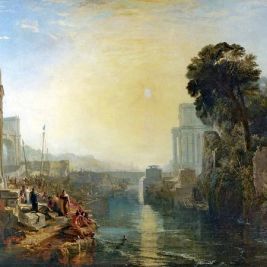 The painting "Dido building Carthage" by William Turner is the artist's beloved creation, which he wanted to take with him to his grave
The painting "Dido building Carthage" by William Turner is the artist's beloved creation, which he wanted to take with him to his grave 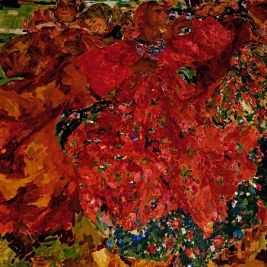 The painting " The Whirlwind" by Filipp Andreevich Malyavin is an inspiring hymn to the beauty and strength of character of Russian peasant women
The painting " The Whirlwind" by Filipp Andreevich Malyavin is an inspiring hymn to the beauty and strength of character of Russian peasant women